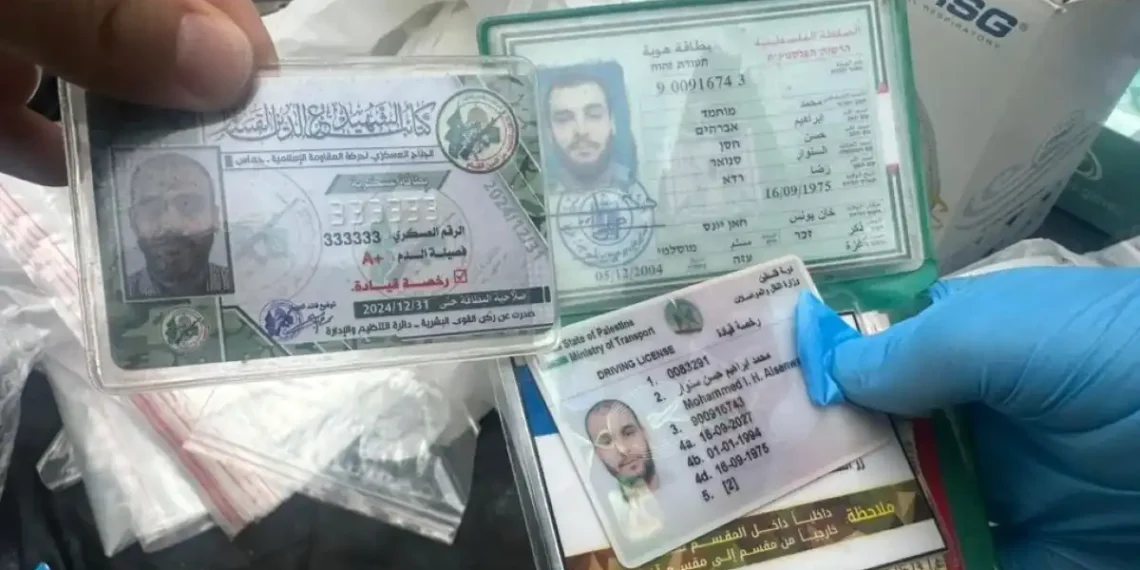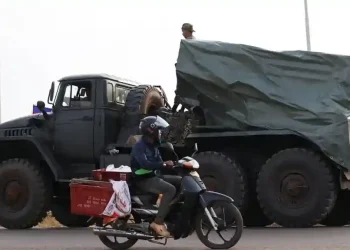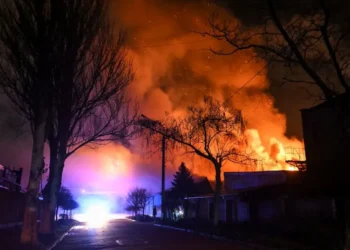Israel Says Body of Top Hamas Commander Found Beneath Gaza Hospital
In a striking claim with both military and symbolic weight, the Israel Defense Forces (IDF) announced that it has located and identified the body of Mohammed Sinwar, a senior Hamas military commander, buried beneath the European Hospital in southern Gaza’s Khan Younis.
The announcement adds a dramatic new chapter to Israel’s months-long military campaign in Gaza, which has seen intense urban warfare, deepening humanitarian suffering, and an unrelenting Israeli push to dismantle Hamas’s infrastructure.
A Commander Found Underground
According to the IDF, Sinwar’s body was found in a tunnel complex beneath the hospital, along with the remains of Mohammad Sabaneh, the commander of Hamas’s Rafah Brigade. Both were allegedly killed in an airstrike on May 13—a strike that Hamas’s civil defense officials say also killed 28 others and injured many more.
Israeli officials say they confirmed Sinwar’s identity using DNA analysis and recovered several personal belongings and intelligence materials from the tunnel. Foreign journalists were given a rare tour of the tunnel site, with video footage showing a narrow corridor dug into the earth, leading to underground rooms furnished with plastic chairs, clothing, and weaponry.
One clip released by the IDF shows a shrouded body being pulled from the passageway by a rope.
Why This Discovery Matters
This isn’t just about identifying a fallen commander. The IDF views the discovery as vindication of its long-standing claim that Hamas uses civilian infrastructure, including hospitals, as cover for military operations.
“This is yet another tragic example of Hamas using civilians as human shields,” said Brig. Gen. Effie Defrin, IDF spokesperson. “It endangers not only Israeli civilians but Gazans as well.”
Hamas and Palestinian medical staff have consistently denied such accusations, calling them Israeli propaganda aimed at justifying attacks on civilian areas. The IDF’s actions, meanwhile, have drawn international criticism, especially as Gaza’s health system verges on total collapse.
The Battle Over Hospitals
The use of medical facilities in the conflict has become one of the most controversial elements of the war.
Since the start of Israel’s offensive, multiple hospitals have been raided, shelled, or evacuated, displacing patients, endangering staff, and reducing already scarce medical capacity. The al-Ahli hospital bombing in April caused global outrage and prompted UN Secretary-General António Guterres to remind all parties that medical institutions must be protected under international humanitarian law.
For Israel, the footage from the Khan Younis tunnel is seen as proof that its hospital raids were not only strategic—but necessary. But without full independent verification, the international community remains divided.
Who Was Mohammed Sinwar?
A longtime figure in Hamas’s military wing, Sinwar joined the group in the late 1980s, not long after its founding during the First Intifada. He quickly rose through the ranks of the Izz ad-Din al-Qassam Brigades, the group’s armed wing, and by 2005, he was leading Hamas’s operations in Khan Younis.
Sinwar was reportedly close to Mohammed Deif, Hamas’s elusive military chief, and believed to have had a hand in planning the October 7 attacks on Israel.
His older brother, Yahya Sinwar, was the de facto political leader of Hamas in Gaza and is considered one of the masterminds behind the October assault. Yahya was killed by Israeli forces last October.
The Bigger Picture: The War So Far
The discovery of Sinwar’s body comes nearly eight months into a war triggered by Hamas’s unprecedented cross-border assault on Israel on October 7, 2023. That attack killed around 1,200 Israelis, mostly civilians, and saw 251 hostages taken into Gaza.
Israel responded with a full-scale military campaign, vowing to eliminate Hamas and recover its hostages. Since then, at least 54,880 Palestinians have been killed, according to Gaza’s Hamas-run health ministry, though these figures are difficult to independently verify and include both militants and civilians.
A brief ceasefire and hostage exchange deal late last year brought a pause in the fighting—but talks collapsed, and violence resumed.
As of now, 54 hostages remain in Gaza, with only 23 believed to be alive.
What Comes Next?
The death of Mohammed Sinwar, if confirmed, marks a major blow to Hamas’s command structure in southern Gaza. But it also raises questions: How many more leaders remain underground? How close is Israel to dismantling Hamas—or is the group regenerating as quickly as it’s being dismantled?
While Israel claims strategic victories, the humanitarian cost continues to mount. Gaza’s infrastructure lies in ruins, famine looms in the north, and international pressure is building for a long-term ceasefire and diplomatic resolution.
But for now, as the war rages on and tunnels are unearthed, each discovery brings not only new facts—but new fuel for the fire.
This article was rewritten by JournosNews.com based on verified reporting from trusted sources. The content has been independently reviewed, fact-checked, and edited for accuracy, neutrality, tone, and global readability in accordance with Google News and AdSense standards.
All opinions, quotes, or statements from contributors, experts, or sourced organizations do not necessarily reflect the views of JournosNews.com. JournosNews.com maintains full editorial independence from any external funders, sponsors, or organizations.
Stay informed with JournosNews.com — your trusted source for verified global reporting and in-depth analysis. Follow us on Google News, BlueSky, and X for real-time updates.













